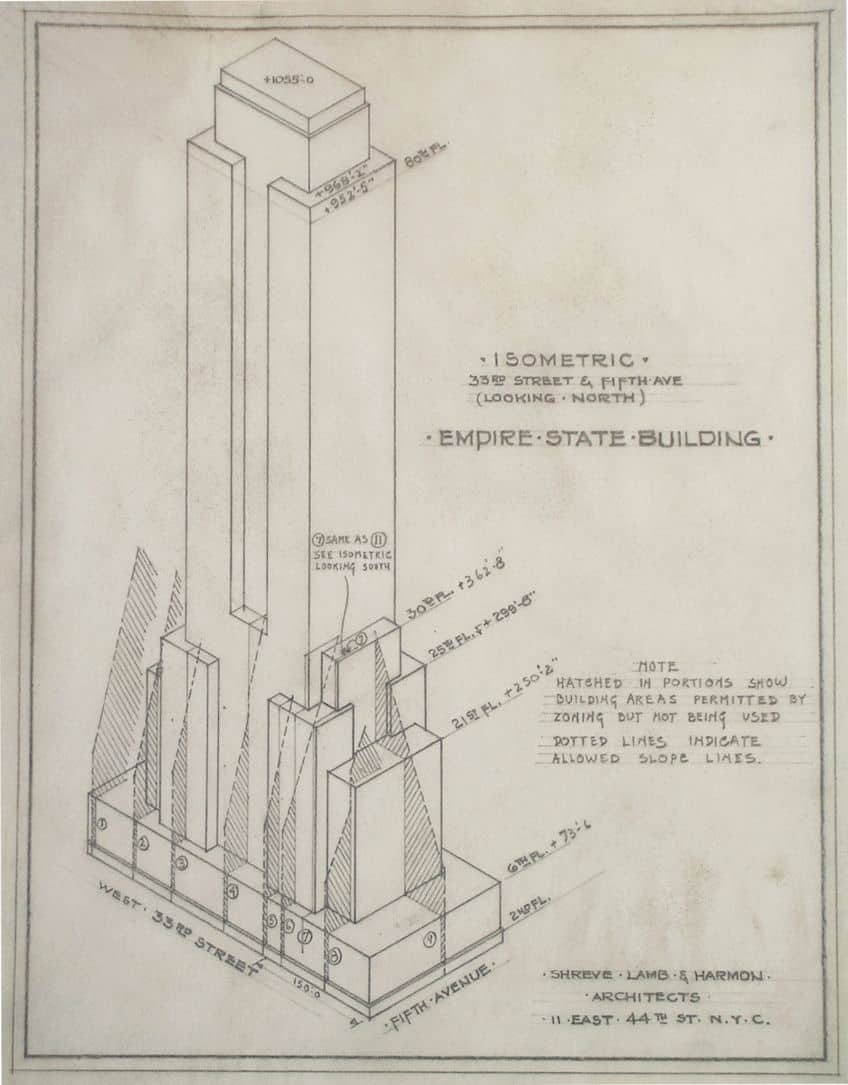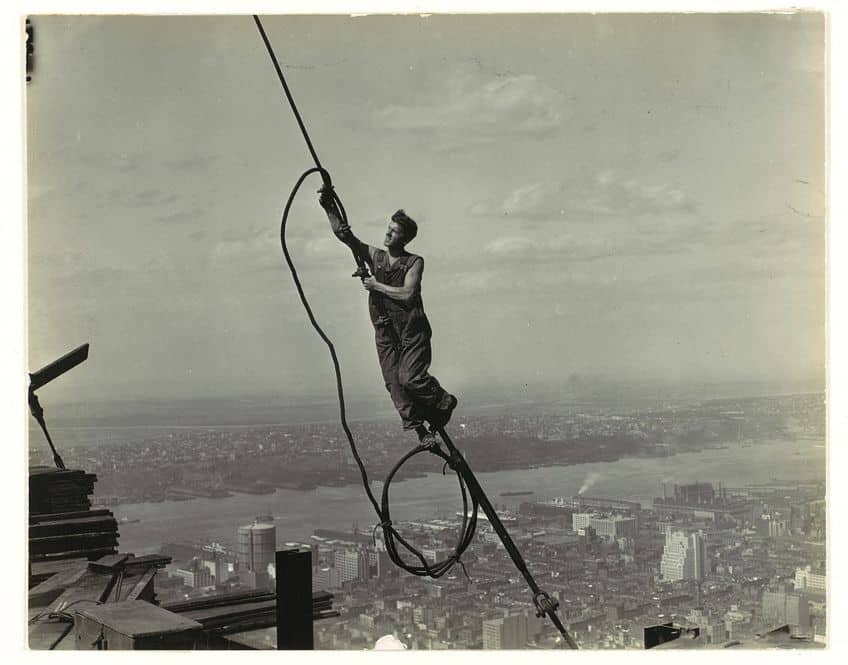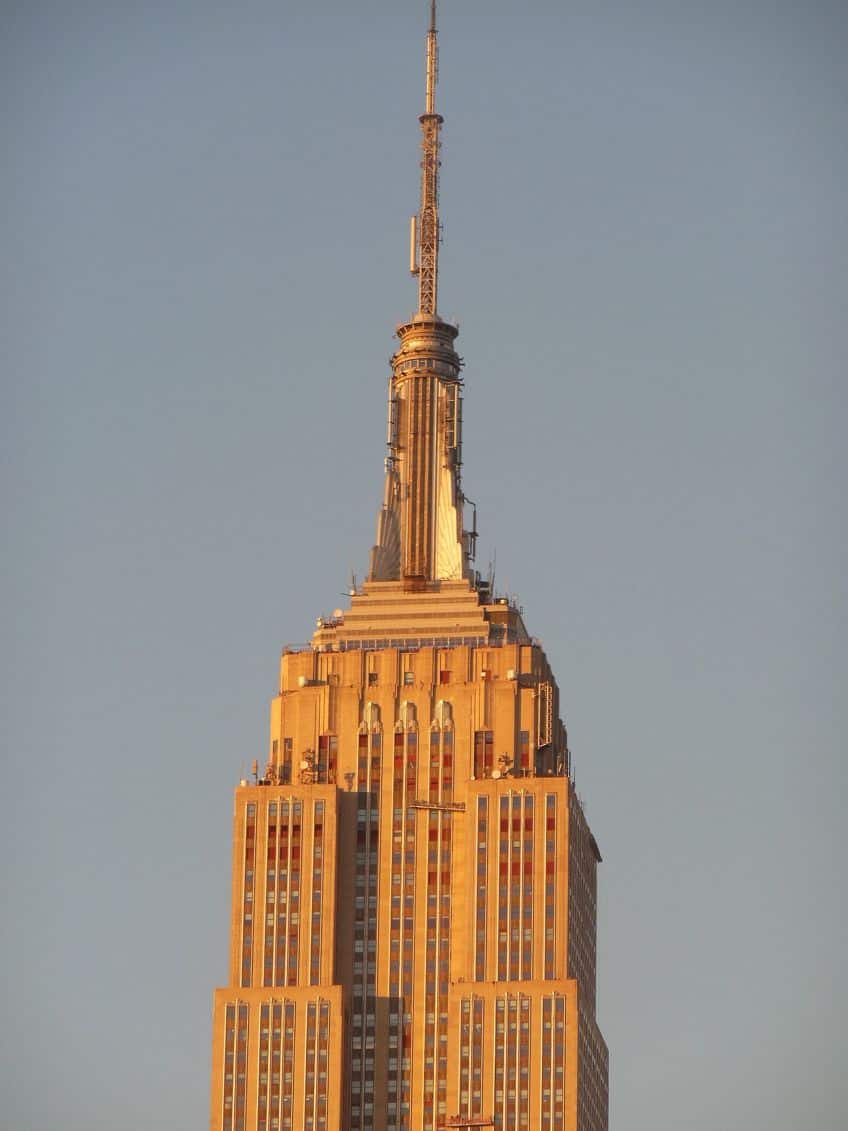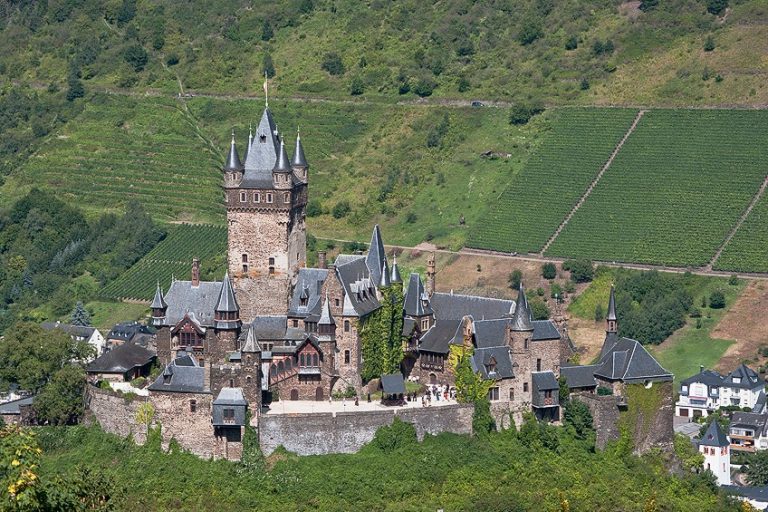Empire State Building – The Empire State Building’s History
Why was the Empire State Building built and who owns the Empire State Building? These are just some of the questions that arise when discussing the Empire State Building’s history. This article will explore the Empire State Building facts, discuss the Empire State building’s construction, and answer related questions such as, “how long did it take to build the Empire State Building”, and “how many floors are in the Empire State Building?”.
Table of Contents
- 1 Exploring All the Empire State Building Facts
- 2 The Empire State Building’s History
- 2.1 The Early Designs of the Empire State Building
- 2.2 Revisions of the Empire State Building’s Design
- 2.3 The Empire State Building’s Construction
- 2.4 Erection of the Steel Structure
- 2.5 Completion of the Empire State Building’s Construction
- 2.6 The Opening of Empire State Building and Its Early Years
- 2.7 Tourism and Tenants
- 2.8 Other Notable Events at the Empire State Building
- 2.9 The Empire State Building in the 1990s
- 2.10 The Empire State Building in the 2000s
- 3 Frequently Asked Questions
Exploring All the Empire State Building Facts
| Architect | Shreve, Lamb & Harmon (est. 1920) |
| Date Completed | 1931 |
| Materials | Steel, limestone, and granite |
| Function | Office building |
| Location | Midtown Manhattan, New York City, United States |
New York is also known as the “Empire State”, which is where this Art Deco skyscraper gets its name from. Until 1970, following the construction of the World Trade Center, the Empire State Building was ranked as the tallest building on the planet. After the terrorist attacks of 2001 – and the subsequent destruction of the twin towers – the Empire State Building measured in as the highest skyscraper in New York until it was dethroned from that position in 2012. To make sure that the Empire State Building’s height exceeded any other building around the world, the architects revised the designs more than 15 times!

The Empire State Building’s History
First off, when was the Empire State Building built and where did they build it? Construction on the skyscraper began on the 17th of March, 1930, and the skyscraper opened on the 1st of May, 1931, just a few months over a year. The site had previously been owned since the mid-1920s by a member of the well-known Astor family, John Jacob Astor. His grandson then opened the Waldorf Hotel there in 1893. His cousin then opened the massive Astoria Hotel in 1897 on the adjacent site. It was popular for a while, however, by the 1920s New York’s social life had moved to other areas to the north, and Waldorf-Historia grew dated.
The hotel closed after the Astor’s decided to construct a replacement hotel in a different area of the city. The site was sold in 1928 to Bethlehem Engineering Corporation.
The Early Designs of the Empire State Building
The initial intention of the company was to build a 25-floor office building on the site of the old hotel. The president of the company put down $100,000 of the amount required to begin construction but needed one million in total. He was not able to find a bank that would loan him the outstanding funds and was eventually forced to sell the site to Empire State Inc. They also bought the neighboring property so that they would have enough space to lay down the foundations, with the two polys combined measuring 130 by 61 meters in diameter. They also announced their intentions to build the tallest skyscraper in the world, which at that time was planned to be 80 floors in height.

The company then contacted the architect William F. Lamb to produce potential design ideas for the building. Using the designs of the Reynolds Building as a basis, a project that the company had previously constructed, the architect was able to create the designs in only two weeks. Another skyscraper that had been built around the same time, the Daily News Building, was another source of inspiration for the architect. The building had to be designed from the top down, as zoning laws required them to add setbacks to the design, resulting in a pencil-shaped building.
Revisions of the Empire State Building’s Design
While the initial plans were for the building to have a height of 50 floors, this progressively increased – at first to 60 floors, and then again to 80 floors. So that the top 50 floors could have unobstructed views, all of the surrounding buildings were subjected to height restrictions. Although it was going to just serve as an office building, the owners wanted to ensure that it would be the biggest and finest office building possible. While plans were still being designed, there were several other buildings that were in the process of being constructed that were also vying for the position of the tallest building in the world.
Realizing the strong competition that was taking place between the other buildings, it was decided that another five floors would be added, as well as a huge spire.
However, the building would have to include setbacks for it to safely reach that height, so they bought another plot next to their site so that they could add an extra 23 meters to the overall base footprint. The new design was announced a couple of days later, along with the inclusion of a viewing deck that would be situated on the 86th level. However, because the difference between the Empire State building’s height, and the next highest building, the Chrysler building, was rather small (1.2 meters in difference), they feared that the designers would suddenly pull something out at the last minute to make the Chrysler higher. So, the designs were once again revised, adding a 68-meter crown to the top of the structure.
The Empire State Building’s Construction
On the 1st of October, 1929, demolition of the old Waldorf-Astoria Hotel that still sat on the site began. It was constructed of very rigid materials and taking it down turned out to be a hard and long process. Another issue was that the materials used in its construction were not in high demand and they found it hard to find places where they could dispose of the scrap metal. The wood, for example, had to be placed in a woodpile and burned in the swamp. Many of the materials, such as bronze and granite, were rather unceremoniously dumped near Sand Hook, straight into the Atlantic Ocean. The required funding for the Empire State building was only acquired just as the demolition of the old hotel began.

The initial plan was to start constructing later that same year, however, the sudden crash of the New York Stock Exchange plunged the country into the ten-year-long Great Depression. Despite this rather large setback, they decided to continue with the development of the building as they were already so far into its planning. Although several of the major shareholders were not affected by the crash, there were many who were, and a loan had to first be secured before construction could commence. It was estimated that canceling the project would lose the investors more money than continuing the project – despite there not being a demand for office space due to the economic downturn.
Erection of the Steel Structure
On the 12th of January, 1930, the contract for the structural steel was awarded, and excavation began on the 22nd of January, just 10 days later. It required 300 men working 12-hour shifts to dig the 17-meter foundation needed for the building. By March the excavation was complete, and actual construction commenced on the 17th of March. Lamb conducted a news conference about the construction plans around this time. He went into great detail describing the Indiana Limestone exterior, which cost somewhat more than smaller bricks, as well as the reflecting steel panels and the building’s vertical lines.
The initial steel framework was erected on the 1st of April, 1930, after which progress accelerated; in one 10-day stretch, the workers completed 14 stories.
The initial steel framework was erected on the 1st of April, 1930, after which progress accelerated; in one 10-day stretch, the workers completed 14 stories. This was largely facilitated by the exact planning of the construction, as well as the mass manufacture of common parts like the spandrels and windows. Nothing was left to chance, and they made sure that there were backup plans if any of their original plans fell through. For example, when a supplier could not deliver black Hauteville marble on time, they substituted it with Rose Famosa marble from a German quarry that was bought solely to supply the project with enough marble. There were also cafés and concession stalls on several of the unfinished stories, sparing workers from having to go to the floor level to buy and eat their lunch.

Temporary water faucets were also installed so that employees would also not have to waste time purchasing water bottles from the floor level. The materials for the building were imported from all around the world, with Steel girders sourced from Pittsburgh, marble that was imported from France, Italy, and England, limestone that had been transported from Indiana, mortar and cement sourced from upper New York State, and timber brought in from Pacific Coast forests and England. One of the developers laid the cornerstone of the skyscraper during an event attended by thousands of people on the 10th of September 10, as steelwork neared completion. The stone included a box holding contemporaneous objects such as the previous day’s New York Times, denominations of coins and notes issued in 1930, a history of the plot and tower, and photos of those involved in the construction.
Completion of the Empire State Building’s Construction
Once the structure was topped out, work on the crown and interior began. Around two months after the steelwork structure had been completed, the mast was topped out on the 21st of November. Meanwhile, progress on the interior and walls was moving quickly, with external walls reaching the 75th story by the time steelwork reached the 95th story. By mid-November, the bulk of the facade had been completed. Because the Empire State Building’s height made it impractical to have many elevators, the architects hired the Otis Elevator Company to create 66 cars that could travel at 366 meters per minute.
Builders encountered space constraints in addition to time constraints as building materials needed to be delivered rapidly and vehicles were required to drop off these supplies without causing congestion.
This was addressed by constructing a temporary road for the trucks and then housing the supplies on the first and second floors of the building. Inside the building, brick hoppers, concrete mixers, and stone hoists guaranteed that materials could elevate fast and without inconveniencing or endangering the public. Apparently, five employees died during construction, but one newspaper reported 14 deaths, and a caption in another magazine circulated unsubstantiated claims of up to 42 deaths.
The Opening of Empire State Building and Its Early Years
The Empire State Building formally opened on the 1st of May, 1931, 45 days ahead of schedule and only 18 months after construction began. The event included Herbert Hoover, the United States President of the time, who switched on the structure’s lights with a symbolic button press all the way from Washington, D.C. Over 350 people, including Governor Franklin D. Roosevelt, Jimmy Walker, and Al Smith, celebrated the opening ceremony in person followed by a luncheon on the 86th story. According to one report from the day, the view from the lunch was shrouded by fog, with iconic sights such as the Statue of Liberty hidden in the mist that blanketed New York City.

Tourism and Tenants
The Empire State Building’s first tenants were banks, big corporations, and brands from the garment industry. One of the tenants recalled that when the building first opened, there were only around 20 tenants, including himself, and that Al Smith was the only actual occupant in the area above his seventh-story offices. Despite their strong marketing efforts in the press and to anybody they knew, it was exceptional for more than a solitary office space to be occupied in the building throughout the early 1930s due to the ongoing Great Depression. They even left the lights of the unoccupied offices on at night, so that passersby would assume that they were all occupied.
The Empire State Building’s reputation as the world’s tallest skyscraper was reinforced by aggressive marketing campaigns.
The observatory was promoted in local publications and on train tickets. In 1931, one million visitors paid one dollar per person to take elevators to the observation deck, making the skyscraper a popular tourist attraction. In its first year of operation alone, the observation deck generated around $2 million in income, which was equivalent to the amount its owners earned in renting out office space in the building that year. The observation deck was routinely packed by 1936, with beverages and snacks for sale at the top.
Other Notable Events at the Empire State Building
The spire of the skyscraper was originally designed to be a docking station for airships. The owners had envisioned 86th-floor airship booking offices and visitor waiting rooms, with the airships themselves tethered to the spire at the height of the structure’s 106th level. Based on their plans, after checking in on the 86th level, an elevator would transport guests to the 101st story, where they would ascend steep stairs to board the airship. However, due to wind currents throughout Manhattan, strong updrafts created by the structure itself, and the spires of adjacent buildings, the proposal proved unfeasible and unsafe.

Furthermore, even if the aircraft navigated all of these difficulties effectively, its crew would have to dump some weight by pouring water onto the roads below to preserve stability and then connect the vessel’s nose to the spire with no fixed support securing the tail end of the craft. On the 15th of September, 1931, a lightweight commercial US Navy airship hovered around the building 25 times in 72 km/h winds. It then tried docking at the designated mast, however, its ballast leaked and it was shaken by erratic eddies. The near-disaster halted plans to convert the spire into a terminal, however, one blimp did make a single newspaper delivery later.
The Empire State Building in the 1990s
The Empire State Building received $55 million in capital upgrades during the early to mid-1990s. Since all of the windows of the building were going to be replaced at the very same time, the LPC required a test of the window’s color; it showed that the original windows of the building were actually red. The renovations also included restoring the limestone facade, updating elevators, alarm systems, and air conditioning, and making the observation deck ADA-compliant by ensuring access for the disabled. The property beneath the building was later sold for $42 million in 1991 to a bidder who represented Hideki Yokoi, the hotelier who was incarcerated at the time in relation to the catastrophic fire at the Hotel New Japan in Tokyo.
Donald Trump and Yokoi formed a collaborative venture in 1994, with the intention of annulling the skyscraper’s lease on the land and gaining complete control of the tower so that, if viable, the two could take the projected amount of combining the control of the tower with the property underneath it.
The Empire State Building in the 2000s
In 2002, the two then sold their land claim to Empire State Building Associates. The building’s public sections were renovated for $550 million commencing in 2009, including improvements to the waterproofing and air conditioning, as well as repairs to the observation deck and the main lobby area. On the 30th of April, 2012, One World Trade Center was completed, surpassing the famous skyscraper as the tallest structure in the city. As part of a substantial makeover of the observatory lobby, the principal visitor’s entrance to the Empire State Building was changed in August 2018 to optimize the flow of tourist traffic. In June 2019, a thorough repair of the building’s antenna masts and mooring began. The repair work was done at night to minimize inconvenience to the observation decks, and the project was complete by late 2020.

At the time it was completed in 1931, the Empire State Building was the tallest structure in the world, a record it retained for more than four decades. It was constructed during the Great Depression and brought work and hope to many of the New Yorker citizens during a difficult period in the city’s history. The Empire State Building is a significant example of Art Deco architecture, which was a fashionable style in the 1920s and 1930s. The geometric forms, strong lines, and decoration of the building are typical of the Art Deco style, making it a noteworthy architectural monument. Today, it is regarded as a symbol of American architectural and engineering ingenuity.
Frequently Asked Questions
When Was the Empire State Building Built?
The Empire State Building’s construction started on the 17th of March, 1930, and was concluded by the 1st of May, 1931. But exactly how long did it take to build the Empire State Building from start to end? The structure was completed in only 410 days at a cost of $41 million. It officially opened in the beginning of May. Before it was built, it went through several design changes to ensure that it would be the tallest structure in the entire world at the time.
Why Was the Empire State Building Built in the First Place?
The project was ordered by John J. Raskob, an entrepreneur and investor who intended to construct a building taller than the Chrysler Tower. During the Great Depression, the development of the Empire State Building also provided jobs and economic stimulation. Furthermore, the Empire State Structure was designed as a commercial office building in order to attract high-paying occupants and generate significant profit. However, for the first few years, the huge building stood largely vacant as the Great Depression had drastically lowered people’s incomes and there were no businesses in a position to afford renting office space there. In fact, the observation deck generated more money than the rental income did when it first opened. And, how many floors are in the Empire State Building? There are a total of 102 floors in this iconic building.
Who Owns the Empire State Building Today?
Empire State Realty Trust, Inc., a publicly listed real estate investment trust founded in 2013, now owns the Empire State Building. Throughout its history, the Empire State Building was owned by various different corporations and people. Empire State Inc., a firm created by John J. Raskob and his partners to construct and run the skyscraper, was the initial owner. The Malkin family and its partners acquired the skyscraper in 2002 and founded Empire State Building Associates, which eventually became Empire State Realty Trust, Inc.
Justin van Huyssteen is a freelance writer, novelist, and academic originally from Cape Town, South Africa. At present, he has a bachelor’s degree in English and literary theory and an honor’s degree in literary theory. He is currently working towards his master’s degree in literary theory with a focus on animal studies, critical theory, and semiotics within literature. As a novelist and freelancer, he often writes under the pen name L.C. Lupus.
Justin’s preferred literary movements include modern and postmodern literature with literary fiction and genre fiction like sci-fi, post-apocalyptic, and horror being of particular interest. His academia extends to his interest in prose and narratology. He enjoys analyzing a variety of mediums through a literary lens, such as graphic novels, film, and video games.
Justin is working for artincontext.org as an author and content writer since 2022. He is responsible for all blog posts about architecture, literature and poetry.
Learn more about Justin van Huyssteen and the Art in Context Team.
Cite this Article
Justin, van Huyssteen, “Empire State Building – The Empire State Building’s History.” Art in Context. June 13, 2023. URL: https://artincontext.org/empire-state-building/
van Huyssteen, J. (2023, 13 June). Empire State Building – The Empire State Building’s History. Art in Context. https://artincontext.org/empire-state-building/
van Huyssteen, Justin. “Empire State Building – The Empire State Building’s History.” Art in Context, June 13, 2023. https://artincontext.org/empire-state-building/.








